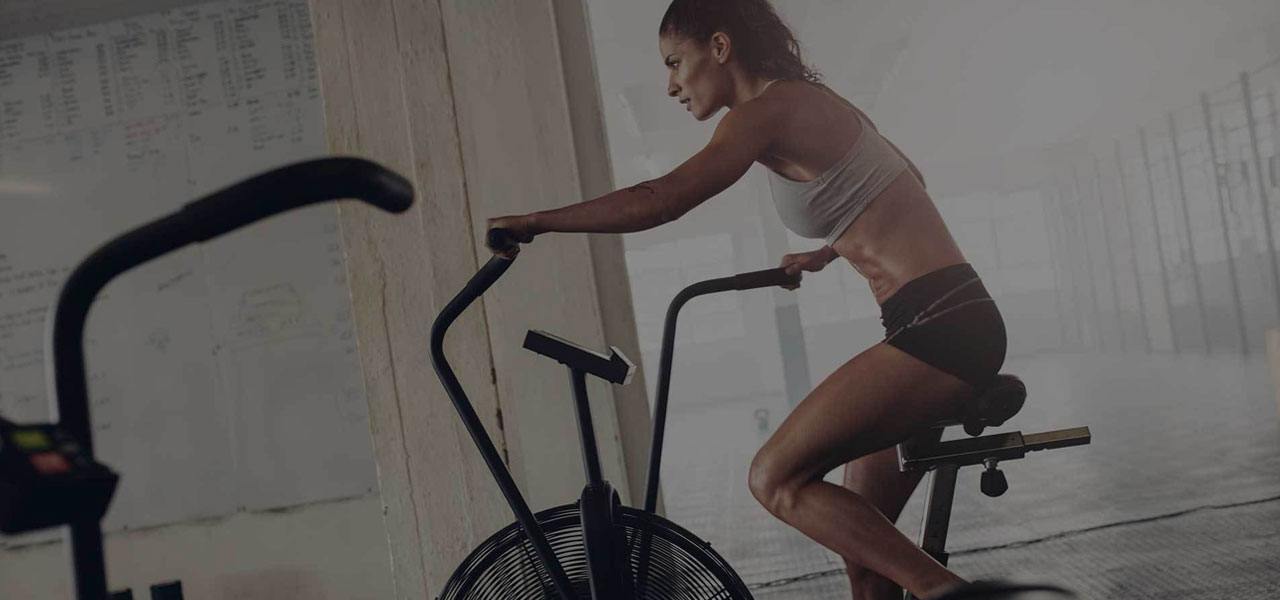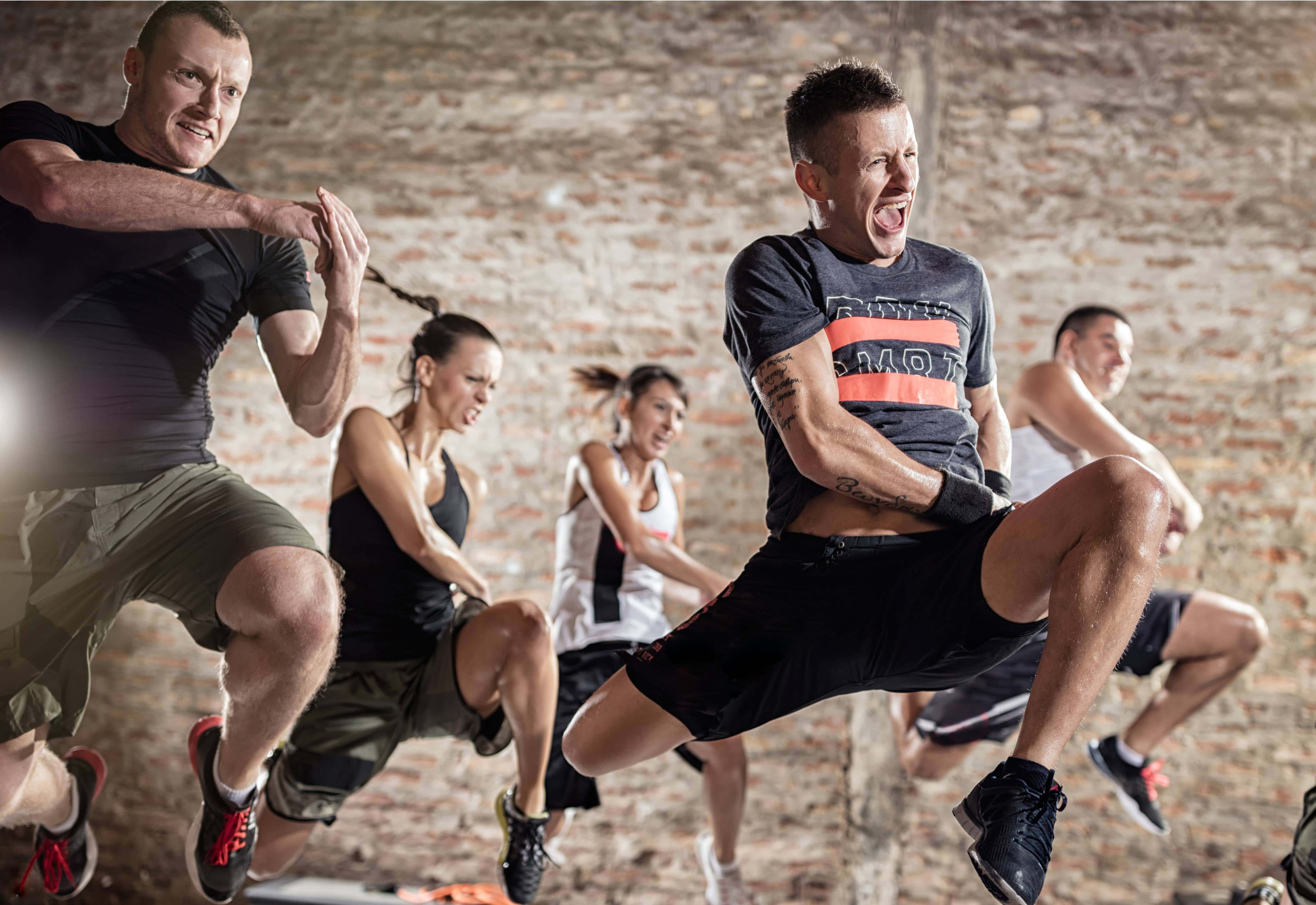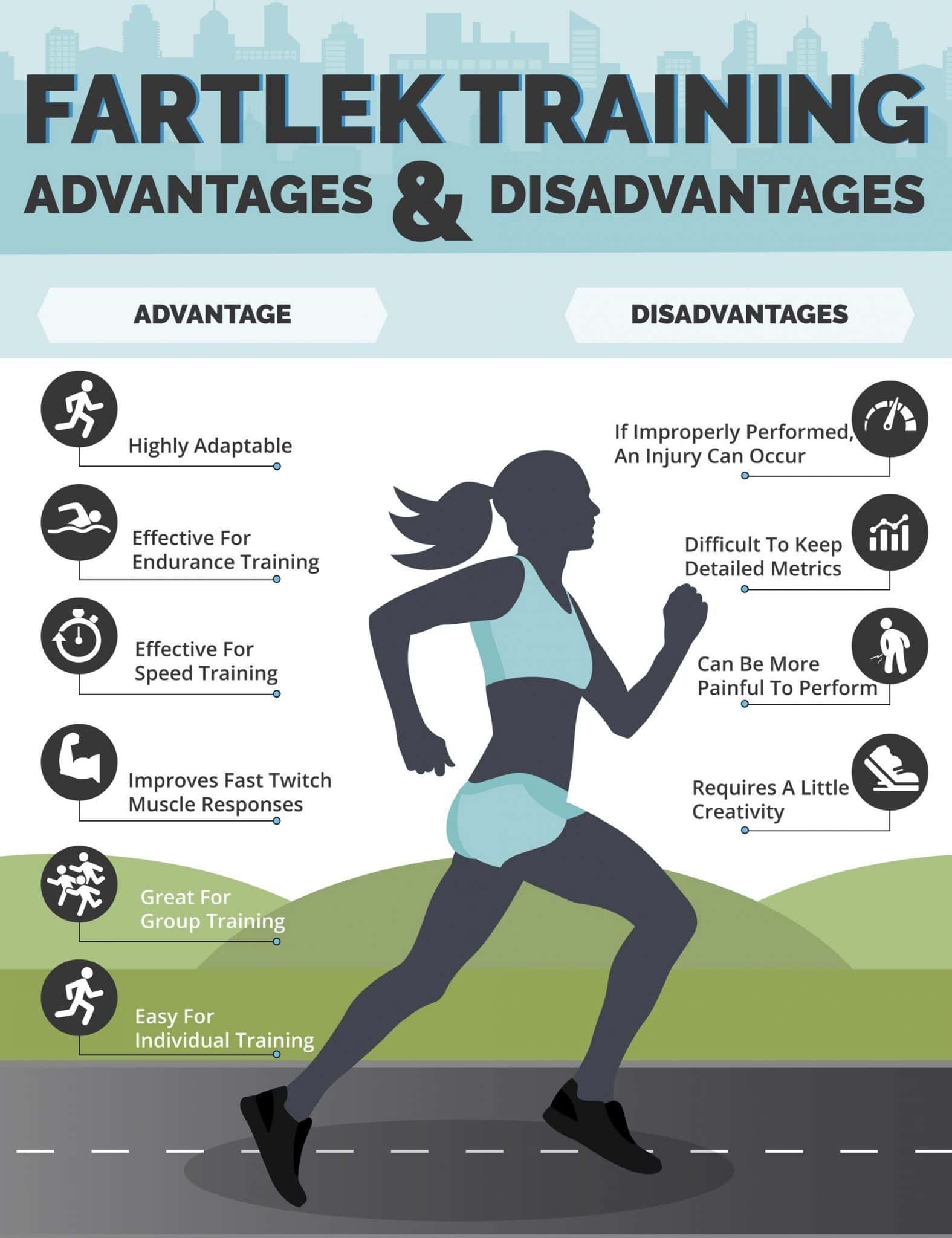Unleashing the Cardio Beast: Advanced Combat Arts Training Methods
As we have previously talked about in the Aerobic vs Anaerobic breakdown in the Energy Systems article, having a strong aerobic base is paramount to being the best martial artist you can be.

Little can save a martial artist that has emptied their gas tank prematurely. No amount of skill or talent can make up for exhaustion. When that point arrives, everything becomes a struggle.
The ability to execute techniques, to breathe, to think under pressure, to survive are all affected. These skills are fundamentally reliant upon the ability to keep pace.
As previously discussed, aerobic means with oxygen. The aerobic system requires oxygen to function. Once the oxygen ‘runs out,’ this means that the demands to produce ATP (energy) are too high to be filled by aerobic energy systems.
In this article we are going to look at several ways to train the aerobic system, their applications, how to implement them into your routine and the pros and cons of each.
Understanding the Importance of Cardiovascular Conditioning in MMA
Mixed Martial Arts (MMA), Boxing, Wrestling, and Brazilian Jiu-Jitsu (BJJ) demands a high level of Combat Arts Strength and Conditioning to achieve peak performance. Thus, excellent cardiovascular conditioning is an essential element in the process. Champions like UFC's Conor McGregor and BJJ ace Marcelo Garcia underscore the necessity of superior cardiovascular fitness to sustain high-intensity efforts during matches and recover faster between rounds. Our detailed post on Energy Systems provides an in-depth look at these crucial physiological mechanisms.
Aerobic Conditioning Methods
Aerobic conditioning is often referred to as long, slow distance conditioning. Aerobic exercise is conducted at a heart rate that’s well within aerobic zones, for long periods of time. Typically aerobic exercise is done for at least 20 minutes.
How do you define your aerobic threshold? The truth is, it’s extremely hard to determine aerobic threshold without laboratory testing. A common method is to subtract 30 beats per minute (bpm) from you lactate threshold. Again, defining your lactate threshold requires testing and access to special equipment.
Thankfully, Dr. Phil Maffetone, founder of the MAF method (Maximum Aerobic Function) has identified a very accurate formula to allow you to define your aerobic threshold without expensive testing and equipment. “The 180 MAF Formula, an alternative to a one-on-one clinical evaluation, provides you with an accurate exercise heart rate (HR) that helps guide optimal aerobic development.” Dr. Maffetone.
The Maximum Aerobic Function (MAF) Methodology
Subtract Heart Rate of 180 bpm - your age, that is your Maximum Aerobic Function
Modify this number by selecting from one of the appropriate categories below:
- Subtract 10 bpm if you are recovering from a major illness, any recent surgery or hospitalization, or are taking prescription medication
- Subtract 5 bpm If you are frequently injured, get more than two colds or flu per year, have allergies or asthma, are inconsistent with exercise, or your athletic performance has plateaued
-If you have been exercising at least 3-4 times a week for at least a year without any of the problems in (a) or (b), keep the number at (180–age) the same.
- Add 5 bpm If you are a competitive athlete training 1+ years without any of the problems in (a) and (b), and have made progress in competition without injury
Use a heart rate monitor to identify your top end MAF number. Do NOT exceed this number to optimally train your aerobic endurance
Embracing Maximum Aerobic Function (MAF): The McGregor Approach
UFC champion Conor McGregor is a vocal advocate for understanding and improving one's Maximum Aerobic Function (MAF). Training around the MAF level, which is the peak heart rate for aerobic exercise, enhances an athlete's endurance, aids in quicker recovery, and helps prevent overtraining. As demonstrated in Creating the Next Manny Pacquiao, fighters who consistently focus on improving their MAF see significant enhancements in their overall performance.
Applying MAF To Your Situation
Once you've established your MAF, conduct any exercise which would allow you to stay within that threshold. These activities could include, yet are not limited to, drilling techniques, jogging, cycling, swimming, circuit training, hiking, yoga, tai-chi, flow sparring, rowing machine, elliptical etc.
Work on your MAF aerobic conditioning for at least 20 minutes per session for a minimum of one hour (60 mins) per week.
Suggestions For Implementing MAF
Day / Level | Beginner | Intermediate | Elite |
|---|---|---|---|
Monday | 3 x 20 min sessions | 3 x 30 min sessions | 3/4 x 45 to 60 min sessions |
Tuesday | 3 x 20 min sessions | 3 x 30 min sessions | 3/4 x 45 to 60 min sessions |
Wednesday | 3 x 20 min sessions | 3 x 30 min sessions | 3/4 x 45 to 60 min sessions |
Thursday | 3 x 20 min sessions | 3 x 30 min sessions | 3/4 x 45 to 60 min sessions |
Friday | - | 3 x 30 min sessions | 3/4 x 45 to 60 min sessions |
Saturday | - | - | 3/4 x 45 to 60 min sessions |
Status | Monday | Tuesday | Wednesday | Thursday | Friday | Saturday |
|---|---|---|---|---|---|---|
Beginner | 3 x 20 min sessions | 3 x 20 min sessions | 3 x 20 min sessions | 3 x 20 min sessions | - | - |
Intermediate | 3 x 30 min sessions | 3 x 30 min sessions | 3 x 30 min sessions | 3 x 30 min sessions | 3 x 30 min sessions | - |
Elite | 3/4 x 45 to 60 min sessions | 3/4 x 45 to 60 min sessions | 3/4 x 45 to 60 min sessions | 3/4 x 45 to 60 min sessions | 3/4 x 45 to 60 min sessions | 3/4 x 45 to 60 min sessions |
Polarized Training - The 80/20 Rule Of Conditioning
If you were to examine the training protocols of elite level athletes, you’d likely find a predictable pattern emerging. Elite level competitors spend about 80% of their time training below their lactate threshold (aerobic) and about 20% of their training time training above their lactate threshold. Essentially, the vast majority of their training consists of aerobic level, endurance-style work.
This pattern has evolved so much in scientific literature that it has adopted the name ‘polarized training.’
From the best MMA athletes, top-level boxers, and elite triathletes to world champion cyclists, nearly all elite athletes mimic this kind of polarized training protocol.
They spend the vast majority of their training at relatively easy aerobic intensity and occasionally will conduct extremely intense bouts of anaerobic/glycolytic workload.
You’ll be able to liken this to the typical structure of your martial arts classes.
Let’s use a typical BJJ class, for example. In a 90-minute class, you may spend 20 minutes conducting an aerobic warm-up, limbering the body and joints, getting yourself ready for the technique portion of the class. Techniques and drilling will typically comprise much of the 90 minutes, often 45-60 minutes of the class.

Finally, in the last 15-30 minutes, you may live-spar and up the intensity. If you map that out, you’ll see that it closely mimics that of polarized training - the 80/20 rule of conditioning.
Why Do Elite Level Athletes Spend Most of Their Time At Low-Level Workloads?
Elite athletes have figured out that training too hard, too often, and missing the key development of aerobic base, can lead to burnout, over-training, diminished performance, and increased risk of injury/illness. It makes no sense to spend so much time training if that time isn’t spent efficiently.
This is why polarized training has become a staple amongst the best athletes in the world. It allows them to train and practice diligently, for prolonged periods, yet minimize the risk of over-training and sub-optimal performance come competition time.
And the Survey Says...
A well known study highlights this very well. Researchers pitted two groups against one another over 5 months of training. Group one was advised to spend the bulk of their training (81%) at “easy” aerobic pace, 12% at moderate and 8% at high intensity paces, whereas group two trained much harder, at much higher intensities (32% of all training to be conducted at high-intensity vs 20% of group one).
Common sense would tell us that the group that trained harder, for longer, would have performed better at the conclusion of the study. In fact, that was not the case. Group one (aerobic conditioning) performed significantly better than group two in spite of the fact that they spent a great deal of their training time at a significantly lower intensity.

Studies like this, and an ever-growing appreciation for exercise science is doing much to dispel the myth that good training always has to be hard training. It simply isn’t the case.
While going hard is at time necessary, the bulk of your time should be spent working aerobically, at lower intensities, and developing your aerobic gas tank.
Polarized Training: The Secret Weapon of Wrestler Jordan Burroughs
Olympic Gold Medalist in Wrestling, Jordan Burroughs, utilizes Polarized Training in his routine. This approach combines low-intensity and high-intensity training, enhancing his performance without the risk of overtraining. Burroughs and other top-level athletes use this technique as part of their strategy, as detailed in Combat Arts Advanced Conditioning Techniques Part II.
What Could Polarized Training Look Like For You?
With so much variance between individual training plans and time commitments, it can be hard to outline a specific polarized protocol. Essentially, you have to be mindful of the 80/20 rule and build yourself a training regimen that consists largely of aerobic development, using tools like MAF training, followed by bouts of high-intensity training (HIIT, sprints, sparring, olympic lifting) that really push you to develop.
This is conducive to the regimen of a dedicated martial artist. Ample time can be spent drilling, practicing, working on technique and fluidity, leaving lots of gas in the tank to turn it up to 10 when it’s time to ‘go live’ and spar.
Be wary of carrying the ‘no pain, no gain’ mentality into your training, or you may run the risk of burnout. Remember, your goal should be to train smarter, not harder. Applying these principles will keep you on the mats for longer without destroying your body in the process.
High Intensity Interval Training (H.I.I.T.)
Both of the aforementioned methods can be incredibly effective for development of the aerobic system. However, they’re very time consuming. The adaptive response from training the aerobic system is very similar to it’s approach (long and slow).
Some people, quite frankly, don’t have the time to complete complimentary aerobic conditioning sessions.
This is where H.I.I.T. comes in.
Don’t worry, high-intensity intervals aren’t as scary as they may sound. At this point, you may be wondering why high-intensity work is suitable for the aerobic system, as we have talked at length about aerobic work being lower intensity, conducted in the presence of oxygen. You’d be correct if your intuitive alarm bells were ringing. However, don’t fret, the beautiful thing about the energy systems is their ability to interplay with one another.

This is particularly true for using H.I.I.T. as a means to bolster the aerobic system. Interestingly, however, training the aerobic systems in the manner of long, slow, MAF-style aerobic work, won’t have much cross-over to high-end anaerobic work. It seems that training at high intensities does a much better job of strengthening our capacity for low-energy work, whereas low-energy work doesn’t provide the same gains to anaerobic work.
This is something to keep in mind if your primary goal is to increase power yet most of your conditioning is endurance work. Having this knowledge means that you can take advantage of this kind of training. H.I.I.T. is super beneficial for a whole host of health reasons, and it’s quick. An effective H.I.I.T. session can be conducted in just 10 minutes - much better for those martial artists reading this that are strapped for time.
Will you gain as much dedicated aerobic development from H.I.I.T. vs MAF style conditioning? No, probably not, at least specific aerobic development. For example, you will not increase your maximal cardiac output (Qmax) anywhere near (if at all) conducting H.I.I.T. vs long distance aerobic work.
However, do not be deterred! You’ll still reap many rewards for your time “HIIT’ing” (plus train some crossover systems and physical attributes). If you’re an athlete short on time, HIIT could be your new best friend.
How Does H.I.I.T. Increase Aerobic Function?
It all starts with your mitochondria - the power plants that are found in every nucleated cell in the human body. Having more mitochondria and increasing their size and efficiency is a sure-fire way to boost metabolic function. For a long time, it was thought that aerobic training was the best way to develop mitochondria, as they thrive in the presence of oxygen.
However, recent discoveries and studies have concluded that the stress responses from H.I.I.T. and anaerobic work leads the body to undergo mitochondrial biogenies (making of more mitochondria) in order to cope with the demands of exercise and strengthen for future efforts.
All mitochondria contain oxidative enzymes that lead to improved metabolic function, particularly of skeletal muscle. This increase in mitochondria from training adaptations can make you more effective at burning both fat and carbohydrates for fuel and increasing energy availability from ATP. More ATP = more gas in the tank. H.I.I.T. carries more benefits than just mitochondrial adaptations, such as increasing VO2 max, weight-loss, muscle-building, and increased athletic performance.
However, keep in mind that H.I.I.T., although very challenging and short in duration, can be a great addition to your aerobic conditioning.
High-Intensity Interval Training (HIIT): The Choice of Boxer Floyd Mayweather
Boxing legend Floyd Mayweather was known for his exceptional endurance, which he attributed in part to High-Intensity Interval Training (HIIT). Mayweather frequently used HIIT to increase his speed, improve cardiovascular fitness, and burn fat more effectively.
How To H.I.I.T. It?
There are many variations and applications of H.I.I.T. training, so to maximize efficiency, it’s always a good idea to see how the experts program their athletes H.I.I.T. training. According to lead H.I.I.T. researcher, Stephen Mcgreggor, PHD, a H.I.I.T. training protocol that has been scientifically shown to lead to increased aerobic performance, recovery, power output and VO2 max looks like this:
Start with 4 x 30 seconds maximum sprints, with two to four minutes rest after each sprint, just three times per week
Gradually increase this to 10 x 30 second sprints with 2.5 minutes rest. Again, just three times per week
Do this for for 7 weeks, for a total of 6.5-15 minutes of HIIT per week
Another H.I.I.T. session may use any effort repeats with a work:rest ratio of 1:1 or 1:2. For example: Rowing machine sprint repeats: Max effort for 30 seconds, rest for 30 seconds or 60 seconds, repeat using the same principles mentioned above.
Other options could include making your H.I.I.T. more martial arts-specific. You could mimic the above protocol while hitting the heavy bag, for example.
It’s also key to note that the sprints don’t always have to be running sprints (although this is desired due to bone density and connective tissue strengthening adaptations).
If you have problems with impact (knee/back issues) then you can adapt further and perform these sprints in a pool, on an elliptical, or on a rowing machine. If running is a little too tough on your knees, hit the hills. Running uphill decreases the impact forces on the knees.
Fartlek Training
Fartlek is Swedish for “speed play” and that is just what Fartlek training is. You vary your tempo, intensity and output randomly and for varying times and intensities, as your mood, energy levels, and climate dictates.
This training method is unpredictable and mixes high bouts of moderate to intense efforts, with easy efforts throughout.
Fartlek Training: How MMA Athletes like Nate Diaz Train
Nate Diaz, a respected MMA athlete, is a known proponent of Fartlek Training. This flexible approach combines continuous and interval training, perfect for replicating the unpredictable intensity of an MMA fight. Fartlek training contributes to improving both aerobic and anaerobic conditioning, a valuable asset for any MMA fighter.
How You Could Fartlek
You might pick out a tree in the distance and sprint there, taking the next two minutes to slowly jog and recover, after which you tackle the a hill at 75% perceived effort, and go down the hill at a brisk walking pace.
The goal of Fartlek training is to break the monotony associated with cardio and aerobic training.
However, this does come with some drawbacks. It’s a less scientifically validated approach and relies upon your perceived levels of exertion and exhaustion. This can be tricky to navigate, as we have a tendency to go a little bit too easy during our easy phase, and not quite hard enough when we’re supposed to go hard.
This lands us in the dreaded ‘black hole’ cardio zone - a place where well-intentioned trainees often find themselves.

Image source: Triathletes Tribe
The pace that they set is not ideal to cause sufficient adaptation to the required energy systems and therefore their efforts aren’t rewarded as thoroughly as they ought to be. They’re either working a little too easy for insufficient time (causing no adaptation), or a little too hard for too long (causing burnout and physiological stress).
You can always avoid such pitfalls by wearing a heart rate monitor and paying attention to training zones to ensure you’re matching them with your desired training outcomes. There’s no ‘how-to’ guide as far as Fartlek conditioning goes.
You have to enjoy the workload and be mindful of your efforts. In many ways, Fartlek does a good job mimicking the unpredictable nature of martial arts competition and training. Much of a match can be spent in a very slow, tactical battle, in between super high-paced scrambles and bouts of explosion. For this reason, you can adopt a Fartlek style approach in your practice, or implement it into your conditioning outside of the gym.
Essential Cardio Tips for MMA Athletes: Lessons from the Champions
Here are a few cardio conditioning tips embraced by MMA, Boxing, Wrestling, and BJJ champions:
Regular Monitoring of Cardiovascular Conditioning: The Approach of BJJ Champion Marcelo Garcia
Marcelo Garcia, multiple-time BJJ World Champion, emphasizes the importance of regular cardiovascular conditioning monitoring. Garcia and his team track metrics like heart rate and VO2 max to tailor his training and optimize his performance. Learn more about these metrics in our Power of Breath Control post.
Variety in Training: Conor McGregor's Diverse Regimen
UFC superstar Conor McGregor is renowned for his diverse training routine, regularly incorporating a mix of HIIT sessions, Fartlek Training, and Polarized Training. This variety challenges his body in different ways, fostering overall improvement in his cardiovascular fitness while preventing workout monotony.
Adequate Recovery: The Importance of Rest in Mayweather's Training
Floyd Mayweather was not just known for his intense workouts but also for his focus on adequate recovery. Mayweather understood that rest periods are critical in reducing the risk of injuries and overtraining, and enhancing overall performance. His approach underscores the importance of integrating sufficient rest into any training plan.
The Future of MMA Cardiovascular Conditioning: An Emerging Revolution
The world of cardiovascular conditioning in MMA and other combat sports is constantly evolving, spurred by technological advances and scientific discoveries. Future trends like personalized training plans based on genetic profiles, real-time performance tracking through wearable technology, and immersive virtual reality training experiences promise exciting new avenues for performance enhancement.
As we continue exploring these advancements, the future of combat sports conditioning remains an exciting frontier for athletes and trainers alike.
Innovative coaches in Boxing, Wrestling, BJJ, and MMA are constantly experimenting with new training methods, integrating cutting-edge technology and scientific insights into their conditioning programs.
Genetic Profiling for Personalized Training Plans: The Innovation of Coach Greg Jackson
MMA coach Greg Jackson, who has trained champions like Georges St-Pierre and Jon Jones, is at the forefront of integrating genetic profiling into conditioning programs. By understanding an athlete's genetic predispositions for things like muscle fiber composition and oxygen utilization, Jackson creates hyper-personalized training plans to maximize each fighter's cardiovascular potential.
Real-time Performance Tracking: The Technological Edge of Boxing Coach Freddie Roach
Freddie Roach, the legendary boxing coach responsible for the success of Manny Pacquiao, is known for his innovative use of technology in training. Roach employs wearable tech to monitor real-time performance metrics such as heart rate, VO2 max, and lactate threshold during workouts.
These insights allow him to make on-the-fly adjustments to training intensity and duration, ensuring optimal cardiovascular conditioning for each athlete.
Immersive Virtual Reality (VR) Training: The Forward Thinking of BJJ Coach John Danaher
John Danaher, a renowned BJJ coach, is experimenting with VR technology to offer his athletes a highly immersive and versatile training environment. Not only does this technology provide an innovative way to visualize techniques and strategies, but it also allows for the simulation of high-intensity matches to enhance aerobic and anaerobic conditioning.

source: Fightmersive.com
Integrating Cutting-Edge Research: Wrestling Coach Cael Sanderson's Approach
Cael Sanderson, a successful wrestling coach and Olympic champion, continually integrates the latest scientific research into his athletes' conditioning programs. From exploring the effects of training at different altitudes on cardiovascular performance to investigating the potential of new recovery techniques, Sanderson's approach embodies the progressive future of combat sports conditioning.
These forward-thinking methods and technologies offer promising prospects for the future of cardiovascular conditioning in MMA and other combat sports. As technology and science continue to advance, these new conditioning methods will become increasingly accessible, allowing athletes at all levels to train smarter and reach their peak performance.
Elevating Your Cardiovascular Conditioning
The role of cardiovascular conditioning in MMA, Boxing, Wrestling, and BJJ is paramount. As showcased by champions such as Conor McGregor, Floyd Mayweather, Nate Diaz, and Marcelo Garcia, a strategic and varied approach to cardiovascular training can elevate performance and endurance to extraordinary heights.
Methods such as HIIT, Fartlek Training, Polarized Training, and Maximum Aerobic Function (MAF) training all have their unique benefits and applications. Combining these techniques, alongside regular monitoring of cardiovascular metrics and sufficient recovery, can help build a formidable cardiovascular foundation for any combat athlete.
Looking ahead, the future of MMA cardiovascular conditioning is promising. Innovative coaches like Greg Jackson, Freddie Roach, John Danaher, and Cael Sanderson are driving the field forward, integrating cutting-edge technology and scientific research into their conditioning programs.
As we embrace this exciting future, the potential for performance enhancement in MMA and other combat sports is immense. In the quest for peak cardiovascular performance, one thing is clear: the journey has just begun.
In our next section, Getting Started, we will provide a few ideas to help identify your baseline and establish Strength and Conditioning goals.

Frequently Asked Questions
How Do MMA Fighters Improve Cardio?
MMA fighters typically improve cardio through a mix of high-intensity interval training (HIIT), long-distance running, and sport-specific cardio exercises such as shadow boxing or grappling drills. This blend of exercises enhances both aerobic and anaerobic systems.
How Can I Improve My Cardio Endurance for MMA?
Enhancing cardio endurance for MMA can be achieved by consistently engaging in high-intensity interval training (HIIT), maintaining a regular long-distance running schedule, and incorporating MMA-specific cardio drills. These exercises help build both your aerobic and anaerobic capacities, crucial for MMA performance.
How Much Cardio Do MMA Fighters Do?
MMA fighters often devote significant training time to cardio, which can range from 2-3 times a week to daily sessions, depending on their training phase. They combine different techniques, like distance running, HIIT, and sport-specific drills, to maximize their cardiovascular fitness.
What Is the Best Cardio Training for Fighting?
The best cardio training for fighting involves a combination of HIIT, distance running, and sport-specific drills. HIIT replicates the fight's intensity, distance running develops the aerobic base, and sport-specific drills help to maintain high cardio levels during specific fight scenarios.
